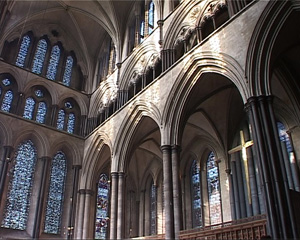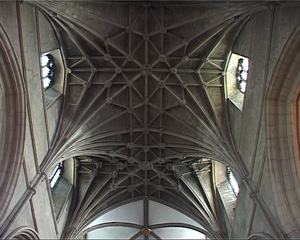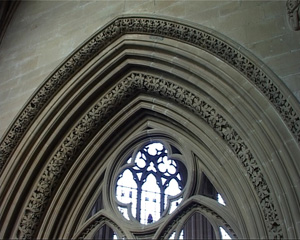Gothic Architecture
 |
| Salisbury Cathedral |
To start of with the background, Gothic architecture had nothing to do with haunted houses, Halloween related, black nail polish, or dark things in general. The original Gothic style was to be developed to bring sunshine into peoples lives, especially in churches. Goths were a barbaric tribe that held power to numerous regions of Europe. Gothic came to term from a certain style after the Roman empire and the establishment of the Holy Roman empire collapsed. It grew out of the Romanesque architecture style, also when both prosperity and relative peace allowed for several countries of cultural development and great building schemes. From 1000 to around 1400 numerous significant cathedrals and churches were built, this was mainly in Britain or France.
Gothic architecture was a very complex and daring design. The most fundamental element of Gothic architecture is pointed arch, which was most likely borrowed from the Islamic architecture. The pointed arch relieves stress from major structural elements and this allowed the possibility of reducing the size of columns that supported the arch. It also made them slender and slim rather than massive and bulky. The columns went all the way up to the roof and were a part of the vault. In the vault was the pointed arch, which was three-dimensional. The ribbed vaulting is another significant feature of Gothic architecture.
 |
| Lierne vaults Gloucester Cathedral |
A vault is a self-supporting arched form and an ornamentation is the decoration or embellishment put into a sculpture. The new understanding of architecture and design lead to more fantastic examples of vaulting and ornamentation. Vaulting became more complicated and it eventually crossed with lierne ribs into complex webs. This also added the extension of cross ribs, which were called tierceron. The Gothic period took over in the 15th century; the peak of the art.
 |
| Open tracery at Southwell Minister |
To explain the design in depth, the slimmer the columns were and the lighter the system of the thrust was it allowed bigger windows and more light to shine through. As said in the beginning, it is bringing sunshine into peoples lives. Gothic churches have crazy and dizzy designs that include windows, carvings, tracery, and ribs. In the Gothic buildings almost all of the surfaces were decorated with designs.
After the great spread of Gothic architectural styles, everything shifted back to being nice and neat. This meant that every little thing shifted into the classical area where straight lines were added, as well as a rational geometrical appearance. Towards the end, the Renaissance named Gothic; it was later applied to the this medieval style that seem vulgar to the Renaissance.
Citation:
Valerie Spanswick, "Gothic architecture, an introduction," in Smarthistory, August 8, 2015, accessed September 30, 2020, https://smarthistory.org/gothic-architecture-an-introduction/.
Hi Chlo great post, i too did my piece on gothic architecture, it was truly fascinating how the masonry work was so detailed and the glass windows that were able to come out of having the columns the way they were.
ReplyDeleteHello Chloe,
ReplyDeleteI learned a lot reading your blog post about Gothic architecture! I liked how you started off by debunking some myths and misunderstandings that a lot of people have when thinking about the Gothic era in medieval times. This also reminded me of this week's zoom meeting with Dr. Zimmerman. She also discussed how there were engineering and architectural differences and advancements with how churches were built. We also discussed different types of arches that were commonly used such as: the classic arch, barrel vault, and crossed groin joints in the ceilings to support more slender columns.
-Autumn Fink
Hi Chloe!
ReplyDeleteGreat post! It's interesting how a 'barbaric' Germanic tribe that seemed to 'reign terror' over the Roman empire had one of the largest influences in architecture after the fall of the empire. It's fascinating how they used intricate designs to help create a new style of building, showing that the design wasn't purely for aesthetics.
I felt it necessary to redefine “gothic” in terms of architecture. No, it does not reflect a dark, emo subculture… it is the architectural style! I like the incorporation of the background knowledge; where gothic architecture came from, how and why. My posts’ focus was mainly on the physical aspect of gothic architecture because historically, I technically could’ve gone on forever. Comparing prior styles, similar concepts, contemporary significance and symbolism etc.
ReplyDeleteWhen I first hear the word gothic, I too think of the stereotypical term "goth" that we think of today. I think its funny how gothic style is actually completely opposite with the goal of aquiring more light. I like how you link inspirations of gothic style towers from Islam architecture. You did a nice job of explaining the origins of this style of architecture!
ReplyDelete